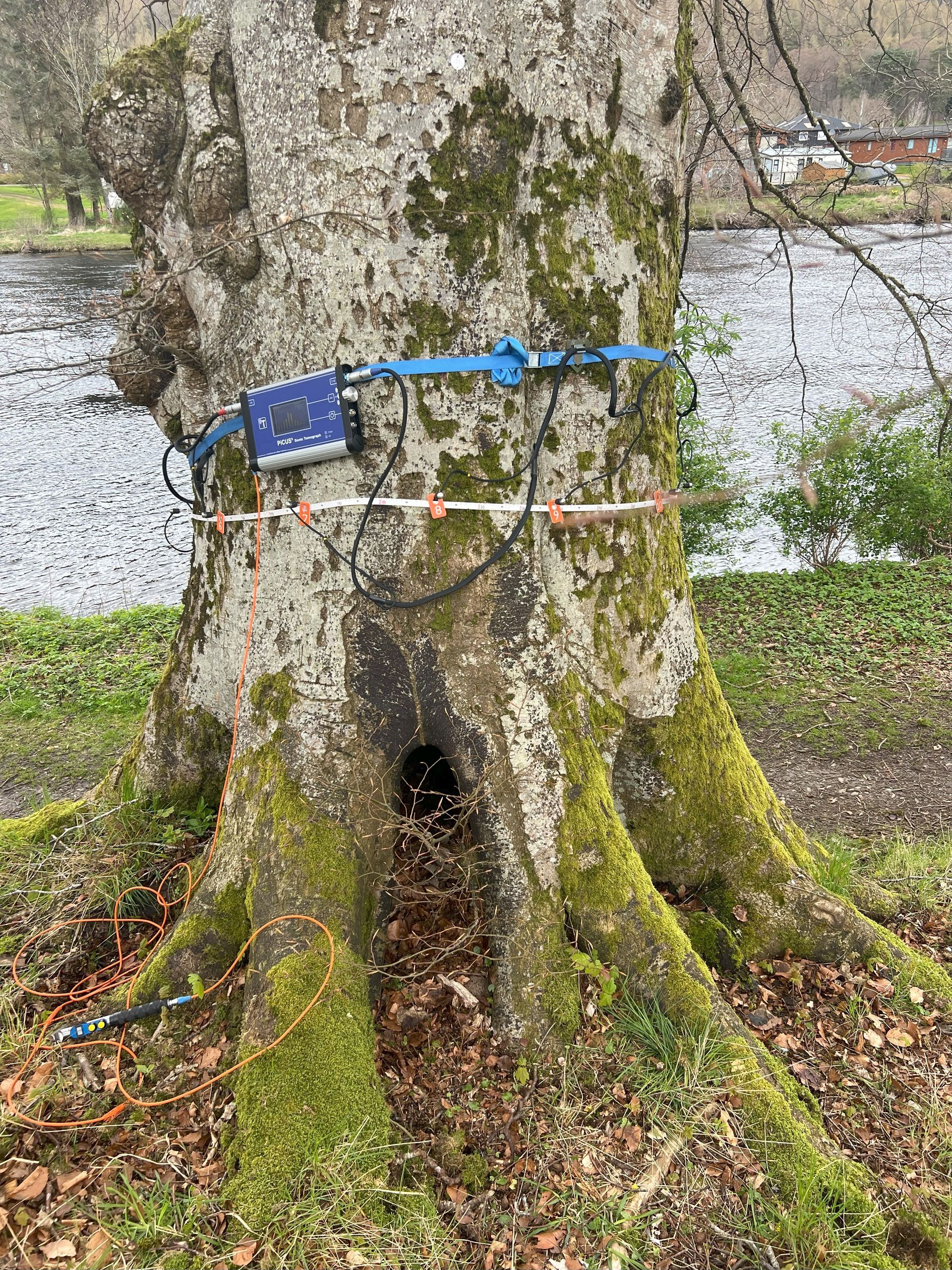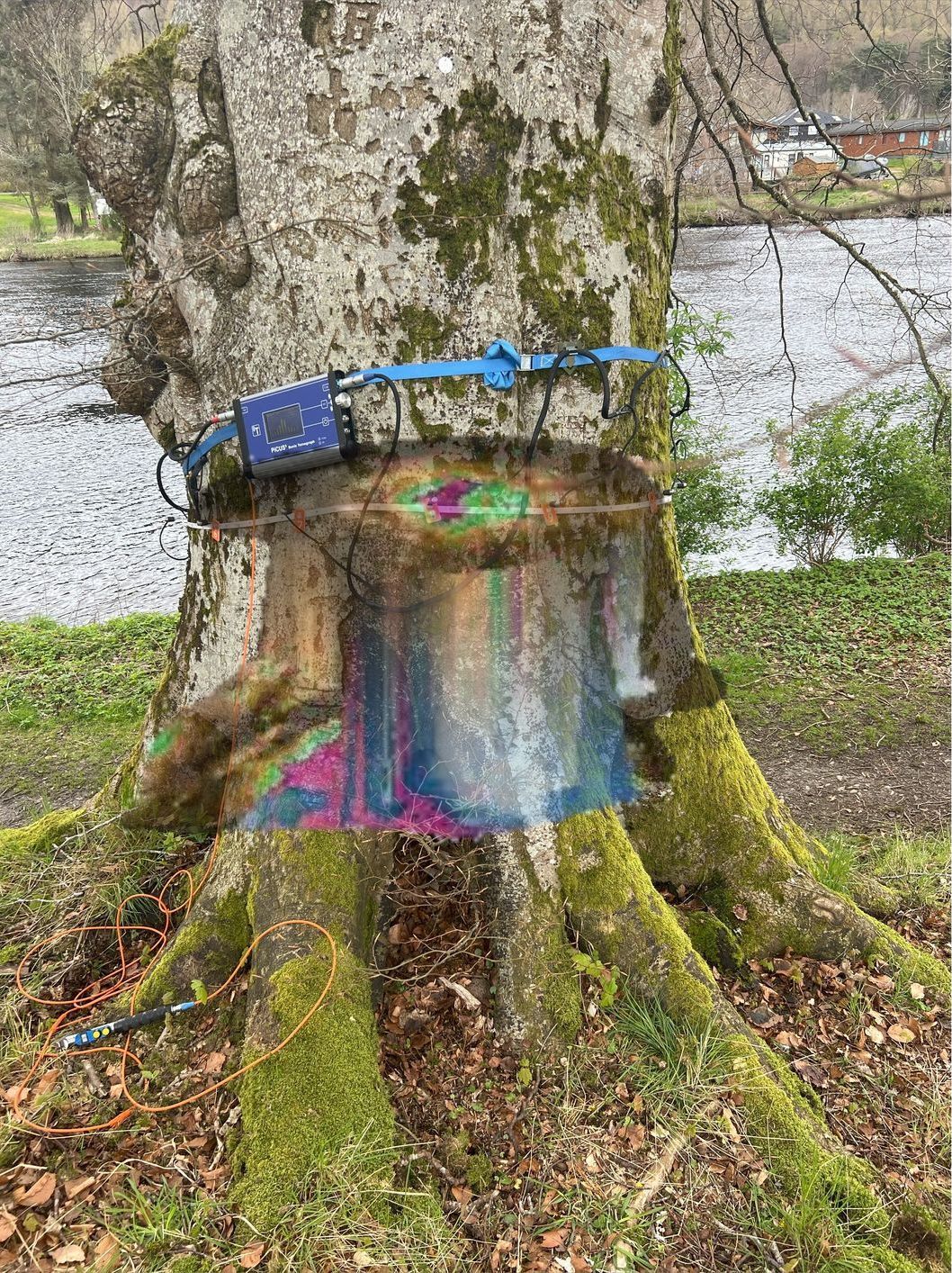Tree Survey, Inspection and Assessment
Tree condition and safety inspections are the underpinning elements of our tree assessment and inspection activities. Tree and woodland assessments are often undertaken to inform risk management programmes, to minimise damage to adjacent infrastructure, to comply with legislation and simply ensure a peace of mind for tree and woodland owners.
Typically, through a visual examination of leaves, flowers, fruit, twigs, branches, stem, root system and surrounding landscape, our inspectors look for indicators of disease, decay, or structural weaknesses that may have a bearing on tree health or general safety. Detailed assessments using specialised tools may include aerial inspections, invasive sampling or the application of sonic tomography.
In recent years we have become one of the leading exponents of veteran tree management, striving to retain old, often defective trees with invaluable and dependant flora and fauna often in locations with high public use. We regularly employ unusual management options to create effective solutions including the installation of propping and bracing systems, re-routing access, excluding under canopy areas (by fencing) and performing conservation pruning operations.
PiCUS Sonic Tomograph
This device analyses sonic waves in order to draw conclusions of a tree’s inner woody structure. In solid wood, sonic waves propagate fast. Defects within the wood interfere with the propagation of the waves and lead to lower calculated velocities. The graphic representation displays areas with different transit times in varying colours. In this way, not only can a distinction be made between intact and defective, but gradations in the degree of decomposition can also be recognized.

The PiCUS sonic tomograph analyses the condition of the wood of a tree with the help of sound signals. The instrument measures the transit time of sound waves in wood with high precision, which are generated by lightly tapping with an electronic hammer. The highest determined speed is displayed in dark brown colour, lower speeds in different colours. Since the speed of sound correlates with the static properties of the wood, it can serve as a measure of the resistance to breakage of the wood. For example, it is possible to use the PiCUS sonic tomogram to determine the remaining wall thickness of hollow tree trunks or the spread of fungal defects. The area of the cross-section that is most severely decomposed is shown in blue, the lowest speed in this tomogram. In contrast, the intact wood appears in a dark brown colour. Stages between healthy and decomposed wood appear in colour gradations.
Multiple assessments taken in relatively close proximity up and down the stem of a tree can be combined to illustrate 3D extents of any decay present giving us the ability to show vividly the internal condition of a tree overlayed onto a photo of the tree.
Taking information generated from the PiCUS device and applying our experience of tree assessment over three decades is instrumental in the development of practical tree management solutions for historically and aesthetically important trees.
Slide to reveal!


